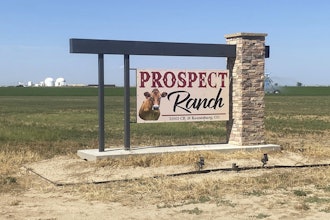
FARGO, N.D. (AP) A defective axle broke and caused a 2013 train derailment that led to a series of explosions just a quarter-mile outside a small North Dakota town, the National Transportation Safety Board said Tuesday.
A BNSF train carrying soybeans derailed and was struck by one carrying oil, setting off explosions near the small town of Casselton, about 20 miles west of Fargo. About 1,400 residents were evacuated from their homes. No one was hurt.
NTSB investigators said during a meeting in Washington that the axle made by Standard Steel in 2002 was on the 45th car of the grain train. Had the axle been subjected to more thorough testing when its bearings and wheels were remounted at a BNSF shop in 2010, investigators say the defect would likely have been discovered. Such testing is now required.
After the crash, the manufacturer worked with the industry to identify and remove similar axles that might have been defective. The agency said Tuesday that any remaining axles in question have likely been taken out of service and new manufacture testing should detect and prevent similar issues.
BNSF didn't comment specifically about the NTSB findings, but spokeswoman Amy McBeth said the railway last year had its lowest number of main line derailments in company history.
"BNSF is committed to safety and preventing incidents in Casselton and all communities where we operate," McBeth said in a statement.
Efforts to reach officials at Standard Steel through email and phone messages were not successful.
The NTSB also cited insufficient safety measures to protect the crew of the oil train, including that there was only one buffer car that separated the oil train's two head-end locomotives. The board is recommending a study on the number and placement of buffer cars.
The crash came six months after a derailment and fire that killed 47 people in a small Canadian city just across the U.S.-Canada border from Maine. It led BNSF executives to hold a meeting with officials in Fargo about the safety of train travel through that city's downtown.
The Casselton derailment happened on the afternoon of Dec. 30, 2013. The two men onboard the oil train told officials they lost sight of the tracks in a cloud of blowing snow shortly before seeing a derailed grain car lying across the tracks. Emergency brakes were applied, but the train was travelling at 42 mph when it struck the car.
The NTSB ordered a study of advanced breaking systems after the Casselton accident.
"Such systems would not have prevented the collision, because only a few seconds passed between the time the oil train crew saw the derailed grain car and the moment of collision," NTSB Chairman Christopher Hart said. "However, advanced brake systems can apply brakes faster, thereby lowering train speed more quickly, shortening stopping distances and reducing the overall severity for many other accident scenarios."
Eighteen of the oil train's 104 cars derailed, spilling 400,000 gallons of crude that fueled the fire that could be seen from nearly 10 miles away. It took several weeks to clean up the remaining oil.
The crash damaged the lead locomotive's front door, forcing the two crew members to exit through the rear of the car.
"The train crew narrowly escaped injury in the accident," said Richard Hipskind, lead investigator in the case.
The locomotive's engineer, Bryan Thompson, last year sued BNSF and Pennsylvania-based axle maker Standard Steel, saying he suffers from post-traumatic stress disorder and is unable to return to work.
___






















